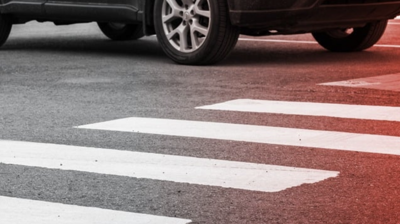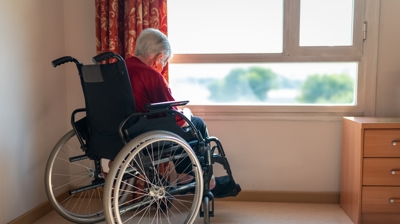Navigating the aftermath of a car accident is never easy, and it can be especially stressful when the other driver was the reason for the crash.
How do you get compensation to pay for repairs to your car, medical bills and missed time from work? It all starts with filing an insurance claim against the other driver.
We’ll break down some basic how-tos and best practices below, from documenting the accident to dealing with insurers. And as always, if you need legal help with your situation, the St. Louis car crash attorneys at Niemeyer, Grebel and Kruse are here to help. Call us at (314) 350-1900 for a free case evaluation.
Gathering Information at the Accident Scene
Presenting compelling evidence is the easiest way to win an insurance claim. Start by collecting crucial details right at the accident scene.
Take photos of:
- The vehicles
- The scene
- Any visible injuries
Look for witnesses and get their contact details and statements.
Document the time, date, and location of the accident, along with any relevant weather or road conditions. The more thorough your documentation, the stronger your claim will be when dealing with insurers.
Dealing With the Other Driver
It’s always awkward and uncomfortable, and nobody ever wants to do it, but it’s important to exchange contact and insurance information with the other driver. This will allow you to kick off the auto insurance claim process with your insurance, because they’ll have the necessary details for communication with the other driver’s insurance company.
The moments after a car accident can be stressful, emotional and disorienting. It can be difficult, but it’s important that you maintain your composure when dealing with the other driver. Don’t apologize or mention anything related to fault, because this can affect your claim.
What To Do If You Couldn’t Collect Evidence
Not everyone gets the luxury of being able to stick around to collect evidence. This is often the case if a driver needs immediate medical attention and is taken to the hospital.
In this case, a police report can be a valuable asset. Police reports are always important, but especially so if you weren’t able to collect evidence yourself. A police report serves as an official account of the car accident, written by the officer that responded to the scene, which can include witness interviews.
Sometimes, discrepancies could arise in the police report that could affect the determination of fault. In such cases, you may need to request an amendment to the report or contest a related traffic ticket.
Depending on the specifics of the crash, you can collect additional evidence from sources like security and traffic cameras. Requesting and obtaining this evidence can be time consuming — especially if you’re also juggling transportation disruptions, medical bills and lost time from work — but if you work together with a car accident attorney, your attorney can request this info for you.
Initiating the Third-Party Insurance Claim Process
Once the information is gathered, it’s time to initiate the third-party insurance claim process. This involves filing a claim with the at-fault driver’s insurance company to cover damages and injuries caused by the accident.
The aim is to use the other driver’s liability insurance to cover damage or injury caused by the collision.
Contacting Your Own Insurance Company
Contact your insurance company as soon as possible after the accident. Give them all of your evidence about the incident and seek their guidance on filing a third-party claim. Your insurance agent can provide insight into the process and guide you on the necessary steps to take.
Additionally, your insurance company may offer assistance in the claim process, especially if the other driver’s insurance carrier disputes the claim or is slow in processing the claim. Your insurer can step in to expedite the process and ensure you receive the compensation you deserve.
Filing a Claim with the At-Fault Driver’s Insurance Company
The next step is to file a claim against the at-fault driver’s insurance company. This claim aims to obtain coverage for repairs, damages and medical expenses caused by the accident.
The claim can be initiated online, over the phone with the at-fault driver’s insurance company, or your insurance company can file it on your behalf. When you speak with your insurance company, they will give you their preferred method for filing a claim against the other driver’s insurance company.
Navigating Potential Claim Complications
While the claim process may seem straightforward, it’s not uncommon for complications to arise.
These complications can include simple details, like disagreements over the value of the loss or your choice of repair shop.
Disputing Damage Valuation
Disputing damage valuation can be a challenging part of the claims process. It may involve refuting inexperienced adjuster claims with new evidence or presenting different explanations of the facts.
When it comes to damage valuation, there are several options you can consider:
- Get written estimates from professional body shops
- Look for comparable vehicle prices through online tools
- Negotiate with the adjuster
- Explore legal options such as hiring an attorney or proceeding to small claims court
These steps can help you obtain a fair outcome.
Rental Car and Repair Shop Selection
Choosing a rental car and repair shop is another aspect of the claim process that requires careful consideration. As a policyholder, you have the right to choose your own repair shop to fix damages from the accident.
However, the at-fault driver’s insurance company may suggest a list of preferred repair shops, and there may be incentives for using these preferred shops. Some factors to consider when choosing a repair shop include:
- Reputation and experience of the shop
- Quality of workmanship and warranty offered
- Proximity to your location
- Availability of rental cars on-site
- Insurance company recommendations or requirements
By taking these factors into account, you can make an informed decision about which repair shop to choose.
It’s also important to note that the at-fault party’s insurer typically has a cap on rental car rates, which must be observed when opting for a rental vehicle. Adhering to the rental guidelines set by the other driver’s insurance company is crucial to ensure direct billing or reimbursement.
Understanding Different Types of Coverage for Claims
Liability Insurance
Liability insurance is a crucial coverage option that covers victims’ claims for damages such as:
- Medical expenses
- Property damage
- Lost wages
- Pain and suffering
However, the coverage limits of the at-fault driver’s insurance can restrict the amount available for vehicle repairs, potentially leaving the claimant to cover the difference.
In situations where the at-fault driver’s coverage limit is insufficient, underinsured motorist property damage coverage may help bridge the gap.
Personal Injury Protection (PIP)
Personal Injury Protection (PIP) is an insurance coverage that covers medical expenses resulting from a car accident. PIP coverage assists with paying the medical bills of the policyholder and their passengers after a car accident, regardless of who caused the accident.
This no-fault basis coverage is beneficial as it ensures individuals involved in a car accident have their medical expenses covered, regardless of fault. This coverage can be especially handy if the other driver is uninsured or underinsured.
Legal Assistance with Insurance Claims
Dealing with insurance claims can be a complex process, and working with a lawyer can help ease the stress of his trying time.
Especially if you’re dealing with difficult, unhelpful or unresponsive insurance companies, it can be invaluable to have an attorney on your side. From collecting evidence to support your claim, to managing negotiations with insurance companies, and ensuring that you receive fair compensation, your attorney can be a trusted and valuable advocate.
Contact the skilled St. Louis personal injury attorneys at Niemeyer, Grebel and Kruse today at (314) 350-1900 for help with your claim.






